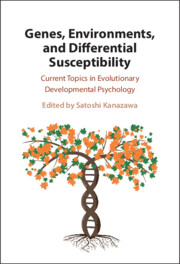 Genes, Environments, and Differential Susceptibility
Genes, Environments, and Differential Susceptibility Book contents
- Genes, Environments, and Differential Susceptibility
- Genes, Environments, and Differential Susceptibility
- Copyright page
- Contents
- Figures
- Tables
- Contributors
- Introduction
- Part I Historical Background and Theoretical Foundations of Jay Belsky’s Work in Evolutionary Developmental Psychology
- Chapter 1 How Belsky’s Model of Child Abuse Has Transformed Scientific Understanding, Clinical Practice, and Public Policy
- Chapter 2 A Turning Point for the Life History Approach to Individual Differences
- Chapter 3 Individual Differences in Response to the Environment
- Part II Parent–Child Relations and Attachment
- Part III Life-Course Development from Prenatal Environment through Childhood to Adulthood
- Part IV Differential Susceptibility to Environmental Influences
- Conclusion
- Afterword
- Biography of Jay Belsky
- Index
- References
Chapter 1 - How Belsky’s Model of Child Abuse Has Transformed Scientific Understanding, Clinical Practice, and Public Policy
from Part I - Historical Background and Theoretical Foundations of Jay Belsky’s Work in Evolutionary Developmental Psychology
Published online by Cambridge University Press: 04 September 2025
- Genes, Environments, and Differential Susceptibility
- Genes, Environments, and Differential Susceptibility
- Copyright page
- Contents
- Figures
- Tables
- Contributors
- Introduction
- Part I Historical Background and Theoretical Foundations of Jay Belsky’s Work in Evolutionary Developmental Psychology
- Chapter 1 How Belsky’s Model of Child Abuse Has Transformed Scientific Understanding, Clinical Practice, and Public Policy
- Chapter 2 A Turning Point for the Life History Approach to Individual Differences
- Chapter 3 Individual Differences in Response to the Environment
- Part II Parent–Child Relations and Attachment
- Part III Life-Course Development from Prenatal Environment through Childhood to Adulthood
- Part IV Differential Susceptibility to Environmental Influences
- Conclusion
- Afterword
- Biography of Jay Belsky
- Index
- References
Summary
The history of child maltreatment recognition and response is reviewed. Although Henry Kempe’s identification of the battered child syndrome in 1962 brought the previously unrecognized problem into public view, public policy in the 1970s continued to focus on after-the-fact remedies that did not lower the population rate of abuse. It was Jay Belsky who placed the problem of child abuse into multilevel context, enabling novel approaches to prevention and promotion. Belsky’s ecological model, articulated in three seminal publications spanning the 1980s, enabled the creation of innovative home-visiting programs to support families in early life to promote infant development and prevent child abuse. These programs are reviewed, particularly the universal Family Connects approach. The ultimate implication of Belsky’s theoretical contribution is the framework for a universal Preventive System of Care.
Information
- Type
- Chapter
- Information
- Genes, Environments, and Differential SusceptibilityCurrent Topics in Evolutionary Developmental Psychology, pp. 9 - 27Publisher: Cambridge University PressPrint publication year: 2025
References
Accessibility standard: WCAG 2.0 A
Content Navigation
Allows you to navigate directly to chapters, sections, or non‐text items through a linked table of contents, reducing the need for extensive scrolling.
Provides an interactive index, letting you go straight to where a term or subject appears in the text without manual searching.
Reading Order & Textual Equivalents
You will encounter all content (including footnotes, captions, etc.) in a clear, sequential flow, making it easier to follow with assistive tools like screen readers.
You get concise descriptions (for images, charts, or media clips), ensuring you do not miss crucial information when visual or audio elements are not accessible.
You get more than just short alt text: you have comprehensive text equivalents, transcripts, captions, or audio descriptions for substantial non‐text content, which is especially helpful for complex visuals or multimedia.
Visual Accessibility
You will still understand key ideas or prompts without relying solely on colour, which is especially helpful if you have colour vision deficiencies.
You benefit from high‐contrast text, which improves legibility if you have low vision or if you are reading in less‐than‐ideal lighting conditions.